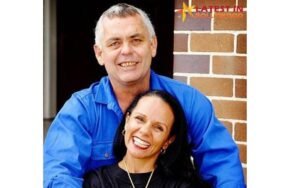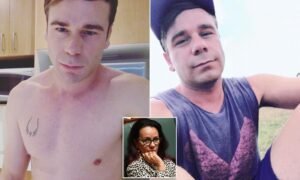Linda Burney, an Australian Labor Party member, has been serving as an Australian politician in the Australian House of Representatives since the 2016 federal election. She represents the electorate of Barton.
Bio/Wiki
Age-66years
Height-1.68m
Born- 25 April 1957
Birthplace- Whitton, Australia
Full name- Linda Jean Burney
Profession-Politician, Teacher
Spouse- Rick Farley (m.? –2006)
Nationality-Australian
Office-Member of the Australian House of Representatives
Party-Australian Labor Party
Family
Burney, who was born on 25th April 1957 in Whitton, a small town in south-west New South Wales near Leeton, had her upbringing in the same place. She has a mixed heritage of Wiradjuri and Scottish origins. During her inaugural speech at the NSW Parliament, she shared that she had no knowledge of her Aboriginal family while growing up and only had the opportunity to meet her father, Nonny Ingram, in 1984. Following that, she had the chance to connect with ten siblings. Throughout her childhood, she was raised by her elderly aunt and uncle, namely Nina and Billy Laing, who played a significant role in shaping her character. They imparted to her valuable principles such as honesty, loyalty, and respect, which became the foundation of her life.

Husband
Rick Farley was the partner of the individual for several years, a significant chapter of their life that came to an end with his passing in 2006. Rick Farley, the former head of the National Farmers Federation, tragically passed away when his wheelchair descended a ramp at Balmain Hospital, causing the 53-year-old to collide with an object.

Children
Burney is the parent of a son and a daughter. Unfortunately, her son named Binni passed away unexpectedly on October 24, 2017.

Education
Burney completed her early education at the primary school in Whitton and spent the initial four years of her secondary education at Leeton High School, followed by the final two years at Penrith High School. Notably, she was among the pioneering Indigenous students who successfully graduated from Mitchell College of Advanced Education, presently recognized as Charles Sturt University. In 1978, she accomplished a Diploma of Teaching from the institution. Furthermore, in 2002, Burney was bestowed with an Honorary Doctorate in Education by Charles Sturt University.
Career
Early Career
From 1979 to 1981, she commenced her professional journey as a teacher at Lethbridge Park public school in western Sydney. Following that, she dedicated her efforts to the Aboriginal Education Unit (Policy) within the NSW Department of Education from 1981 to 1983. Her involvement with the New South Wales Aboriginal Education Consultative Group (NSW AECG) spanned from 1983 to 1998, during which she actively contributed to the creation and execution of Australia’s inaugural Aboriginal education policy. In 1988, she assumed the role of president within the AECG.
Labor Party Involvement
Burney, a member of the Labor Left, became National Vice-President of the Australian Labor Party in 2006 and later held the position of National President from 2008 to 2009.
NSW State Parliament
Burney made history as the first Aboriginal person elected to the NSW Parliament in 2003. She served in various ministerial roles, including Community Services and State Plan. She led the implementation of the “Keep Them Safe” reform plan. Burney also served as Deputy Leader of the Labor Party and held several shadow minister positions. She briefly served as the interim leader of the opposition in 2014 before resigning from state parliament.
Federal Parliament
On March 1, 2016, Burney announced her candidacy for the federal seat of Barton in the upcoming 2016 election. She became the Labor candidate and resigned from her position in the NSW Legislative Assembly on May 6, 2016. Burney won the election and became the first Aboriginal woman elected to the federal House of Representatives. She later took on various shadow ministerial roles and was re-elected in 2019. After the Labor government came into power in 2022, she was appointed as the Minister for Indigenous Australians on June 1, 2022.
Senate Committees
The Joint Standing Committee on the National Disability Insurance Scheme operated from September 10, 2018, to July 1, 2019. Similarly, the Joint Select Committee on Constitutional Recognition Relating to Aboriginal and Torres Strait Islander Peoples (2018) was active from March 26, 2018, to November 29, 2018.

Achievements
- Burney served as a member of the New South Wales Legislative Assembly representing Canterbury for the Labor Party from 2003 to 2016.
- During her time in the assembly, she held prominent positions such as the New South Wales Deputy Leader of the Opposition, Shadow Minister for Education, and Shadow Minister for Aboriginal Affairs.
- In the Keneally ministry, Burney took on the responsibilities of the Minister for the State Plan and Minister for Community Services.
- From 2008 to 2009, Burney assumed the role of National President of the Labor Party, showcasing her leadership within the party.
- Burney made history in 2003 by becoming the first person who identifies as Aboriginal to serve in the New South Wales Parliament.
- Furthermore, in 2016, she achieved another significant milestone by becoming the first Aboriginal identifying woman to be elected to the Australian House of Representatives.
- Following the 2022 federal election, where the Labor Party secured victory, Burney was appointed as the Minister for Indigenous Australians, demonstrating her dedication to representing and advocating for Indigenous communities.
Net worth 2023
Linda Burney’s net worth is approximately $5 million.
Latest News About Linda Burney
Linda Burney, the minister for Indigenous Affairs, shared a heartfelt account of the tragic death of a friend while advocating for support of the Voice to Parliament. During her appearance at the National Press Club, Burney outlined four key areas that she believes the advisory body should prioritize: health, housing, jobs, and education. Recognizing the pressing issues at hand, she emphasized that these areas will be considered as “priority areas” for the Voice, which will have a substantial workload right from the start.
Burney highlighted the unique perspective the Voice will bring, as it will take a long-term approach rather than being constrained by short electoral cycles like the government. She emphasized that the Voice will plan for future generations, not just the next political term.
Addressing concerns about how the proposed constitutional amendment will function, Burney provided a glimpse into the working model. Drawing inspiration from the Calma Langton report, she explained that the Voice will represent every state, territory, the Torres Strait Islands, and remote communities. It will strive for gender balance and ensure the inclusion of young people’s perspectives. Additionally, Burney emphasized that the Voice will actively engage and consult with local communities.

‘Injustice’ of personal friend’s death
Linda Burney, the minister for Indigenous Affairs, shared a heartfelt account of the tragic death of a friend while advocating for support of the Voice to Parliament. During her appearance at the National Press Club, Burney outlined four key areas that she believes the advisory body should prioritize: health, housing, jobs, and education. Recognizing the pressing issues at hand, she emphasized that these areas will be considered as “priority areas” for the Voice, which will have a substantial workload right from the start.
Burney highlighted the unique perspective the Voice will bring, as it will take a long-term approach rather than being constrained by short electoral cycles like the government. She emphasized that the Voice will plan for future generations, not just the next political term.
Addressing concerns about how the proposed constitutional amendment will function, Burney provided a glimpse into the working model. Drawing inspiration from the Calma Langton report, she explained that the Voice will represent every state, territory, the Torres Strait Islands, and remote communities. It will strive for gender balance and ensure the inclusion of young people’s perspectives. Additionally, Burney emphasized that the Voice will actively engage and consult with local communities.